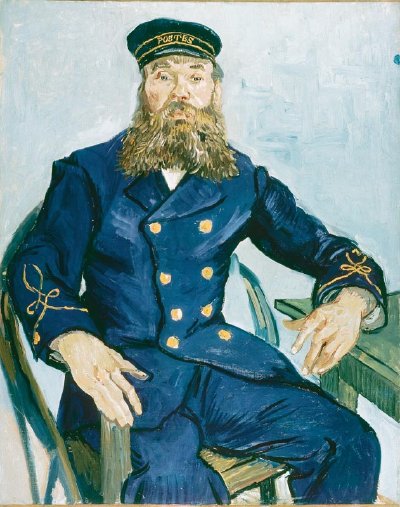In a week’s time “Vincent van Gogh: Master Draughtsman” will open at the van Gogh Museum in Amsterdam. The exhibition draws together many of van Gogh’s most powerful drawings, from the museum’s own collections and from around the world. This week’s picture, loaned for the occasion by the J. Paul Getty Museum in Los Angeles, is the artist’s ink and chalk drawing of his friend Joseph Roulin, a postal worker. It was done between 31 July and 6 August, in the year 1888.
Van Gogh had met Roulin at the Café de la Gare in Arles, where the two used to drink together. Roulin was republican, Boulangiste, anti-clerical, a man who impressed the painter with his directness, his decency and his heartfelt political convictions. “I don’t know if I can convey the postman as I feel him,” he wrote to his brother, Theo van Gogh, in the same year that he created this drawing. “The man is a revolutionary… He is probably considered a good republican, because he heartily detests the republic which we now enjoy, and because all in all he is somewhat doubtful and a little disillusioned with the republican idea itself. But one day I saw him singing the Marseillaise, and I thought I was watching ’89 – not next year, but the one 99 years ago. It was a Delacroix, a Daumier, straight out of old Holland…”
The painter sensed that there was more to this living embodiment of the spirit of the French Revolution, as he saw him, than met the eye. “I have rarely seen a man of Roulin’s temperament, there is something in him terribly like Socrates, ugly as a satyr, as Michelet called him, ‘until on the last day a god appeared in him that illumined...


